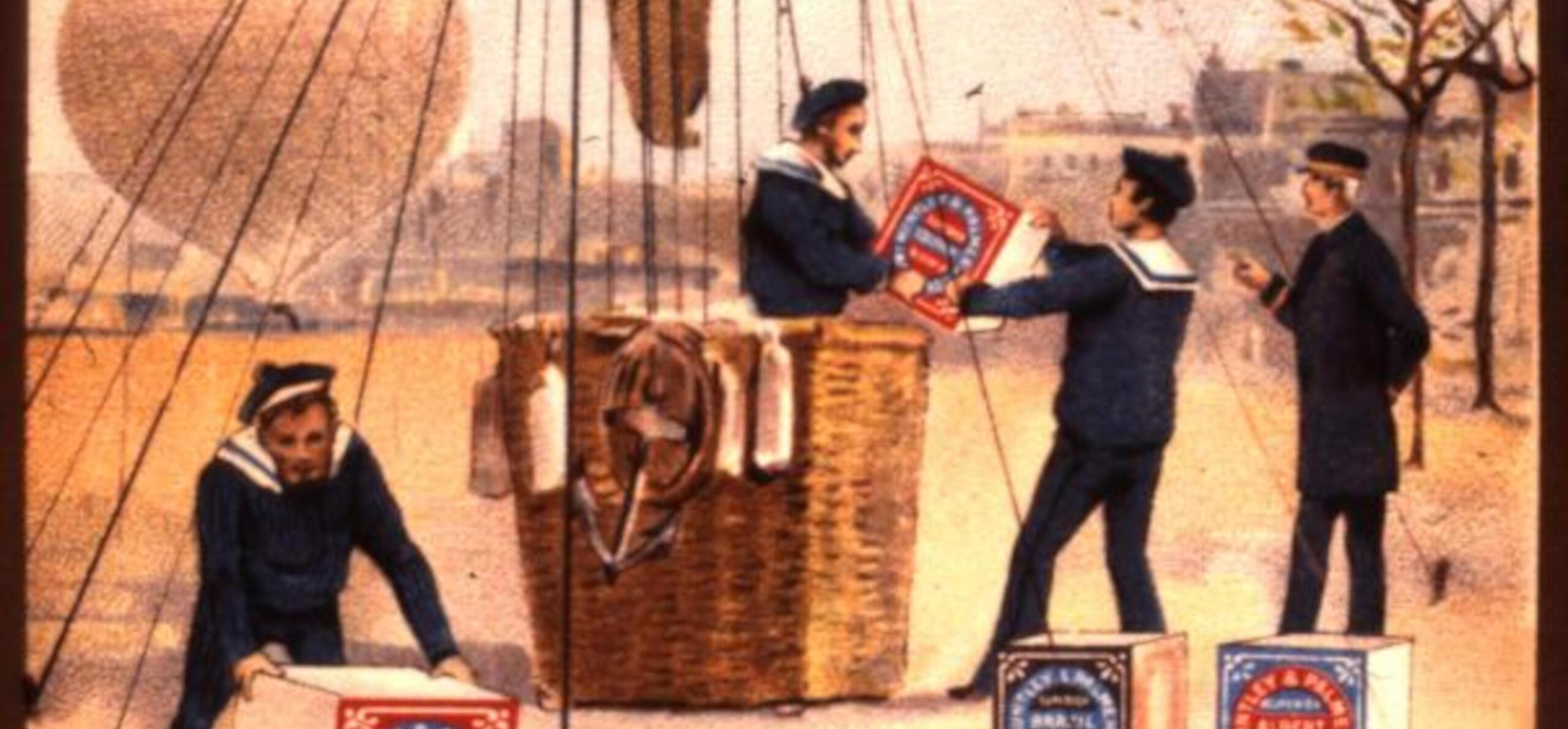From the 1860s, adverts for Huntley & Palmers biscuits appeared in many languages and were often targeted at a specific foreign market. Their popularity with royalty and explorers made them a sought-after item and the adverts were designed to evoke a wealthy and exciting lifestyle.
Chinese calendars
This Chinese calendar reveals Huntley & Palmers' marketing strategy in China. After the end of the Qing dynasty, when high quality food was in short supply, it became fashionable for wealthier Chinese people to buy western products. Huntley & Palmers biscuits were offered for their health value and were considered good for infants to replace milk. This calendar dating from 1910 shows biscuits being presented as a gift to pay respect to elders during celebrations in a rich family.
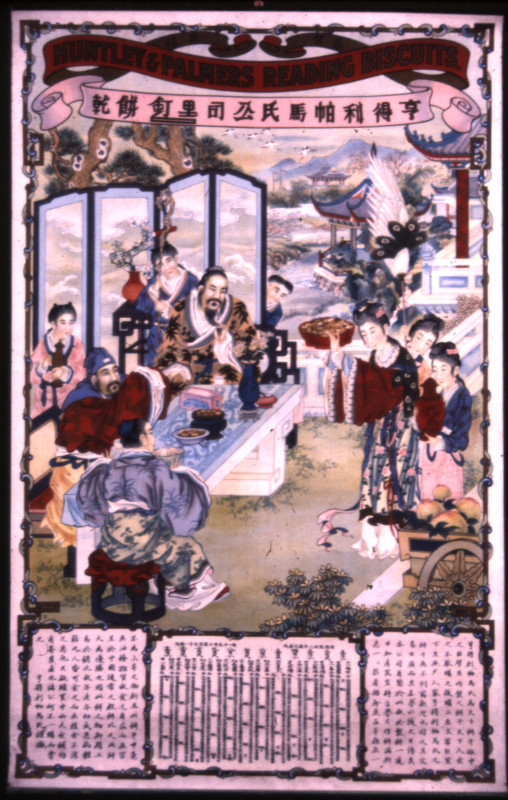
This 1910 calendar, based on designs by traditional Chinese artists, was designed for a wealthy Chinese audience. (REDMG : 1997.120.197)
Food for the colonies
As the number of British people living in the British Colonies increased, so did the desire for a 'taste of home' - rather like people on holiday these days. By 1900, 10% of all exported biscuits went to India. This catalogue from the early twentieth century is typical of the advertising for the Indian market.
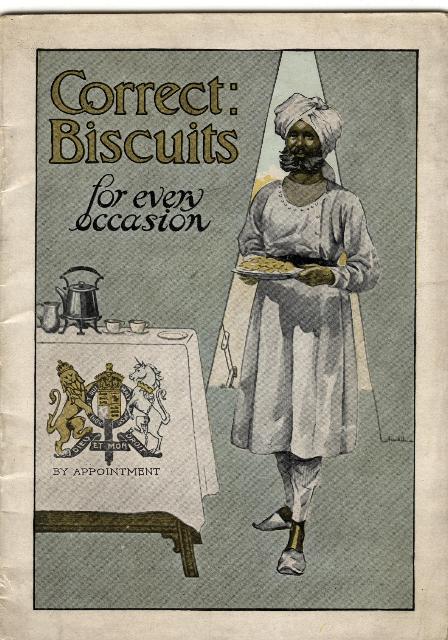
Huntley & Palmers agents had adverts in Indian street markets from the mid nineteenth century. This 1920s advertisement for the Indian market includes an Indian servant on the cover and the correct biscuits for tiffin inside. (REDMG : 1997.82.568)
Trade cards
The idea of the trade card as a brightly coloured collectable picture came from America in the nineteenth century. In Britain, trade cards had usually been black and white, despite the arrival of multicoloured cards in Europe during the 1880s.
Huntley & Palmers produced hundreds of trade cards, which depicted how their biscuits reached the four corners of the globe. The cards were given to retailers and on the back of each card was a description of their latest products. These cards show Huntley & Palmers biscuits being transported using camels, elephants and via a hot air balloon.
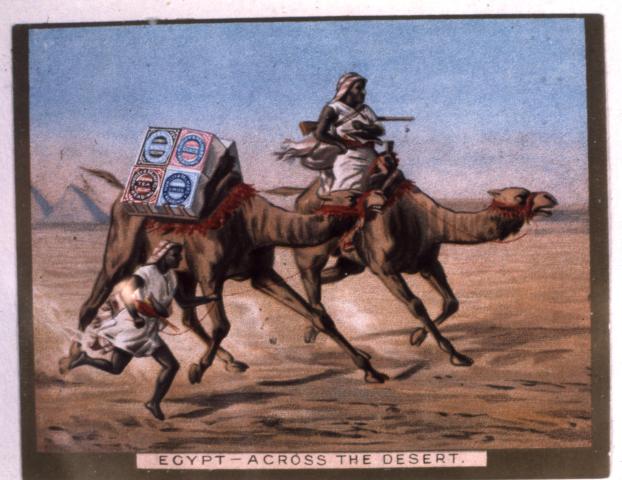
This picture card was one of many small 'trade cards' from about 1890, showing scenes from different countries. Here, men and camels hurry biscuit tins across the Egyptian desert. (REDMG : 1997.82.365a)
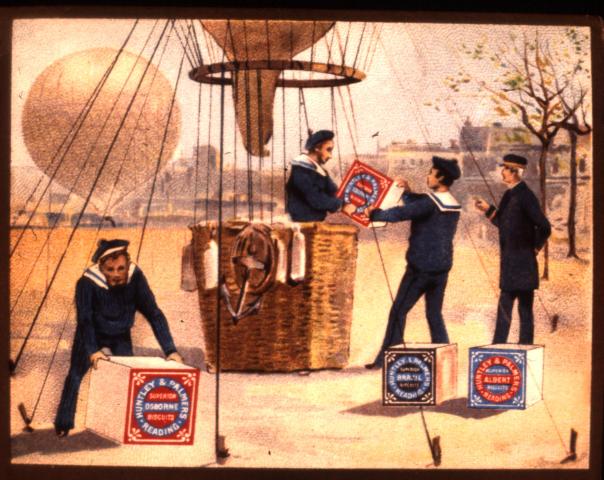
The British Army started using balloons in 1880 and the Royal Engineers Balloon Section was founded in 1890. In 1912 this became the Royal Flying Corps, the forerunner of the Royal Air Force. (REDMG : 1982.102.28)

This Huntley & Palmers picture card from the 1890s features elephants carrying tins to a British fort on the river Indus in India. This card illustrates the importance of the British Empire to Huntley & Palmers' overseas trade. (REDMG : 1997.82.365d)
In the next section, learn about some of Huntley & Palmers' most famous customers.
